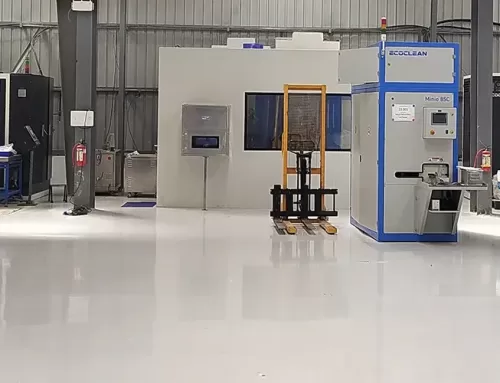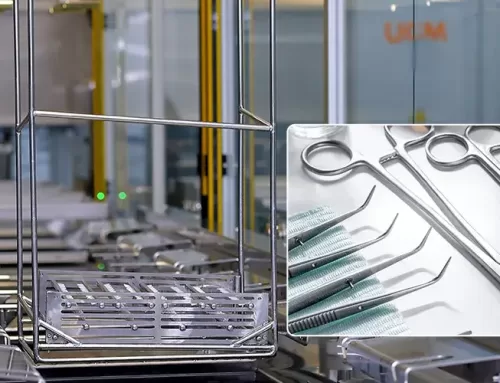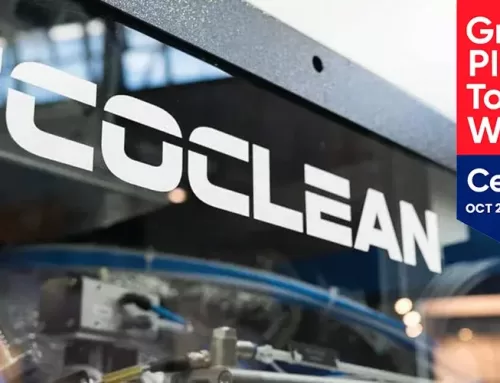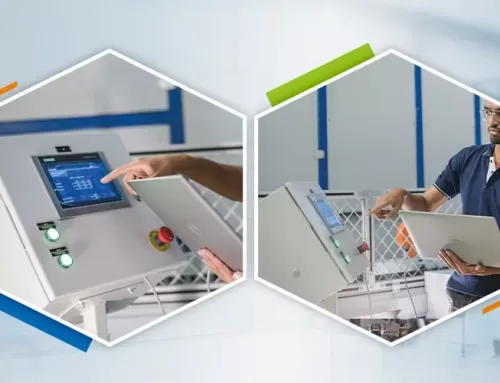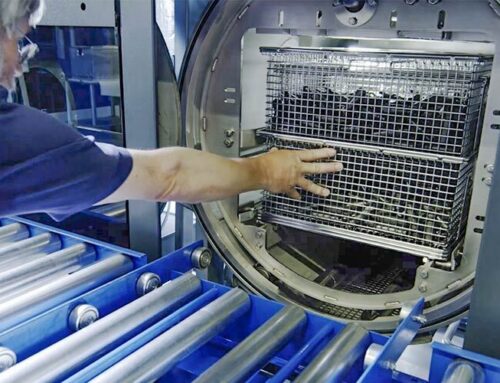In the fast-paced world of Industrial Manufacturing, every second counts. The hum of machinery, the rhythmic dance of production lines – these are the symphonies of success. But what happens when that symphony grinds to a halt? The answer, unfortunately, is a cascade of costs, delays, and frustrations. This disruption, known as downtime, is the silent saboteur of productivity, relentlessly chipping away at profit margins and operational efficiency.
Downtime isn't just an inconvenience; it's a significant financial drain. Each moment a machine stands idle, productivity plummets, shipments face delays, and valuable resources are stretched thin. To mitigate this pervasive problem, manufacturers meticulously track a crucial metric: MTTR, or Mean Time To Repair. This metric quantifies the average time it takes to fix a machine once it breaks down. The overarching goal is clear: reduce MTTR to its absolute minimum, thereby minimizing the debilitating impact of downtime.
But how can manufacturers effectively combat downtime and shrink MTTR? The answer often lies in the very interface that operators use to interact with and control their machines: the Human-Machine Interface (HMI). Often regarded as the "brain" of a machine, the HMI is where operators check status, adjust settings, and, critically, diagnose problems. The evolution of HMI technology, from its rudimentary beginnings to today's sophisticated systems, has fundamentally reshaped the landscape of troubleshooting and efficiency in industrial manufacturing.
The Silent Struggle: Old HMIs and the Downtime Dilemma
Imagine a factory floor decades ago. A critical machine suddenly stops. An operator rushes to the control panel, only to be greeted by a cryptic message: "Error 3B7." What does it mean? Where is the problem? The operator's immediate recourse is to consult thick, often outdated, manuals, flipping through pages, trying to decipher the arcane code. This scenario epitomizes the limitations of older HMI Systems, which, while foundational, inadvertently prolonged downtime and exacerbated operational challenges.
Old HMIs were characterized by several significant drawbacks:
- Cryptic Codes and Lack of Context: Error messages like "Error 3B7" provided no immediate context. Operators were left guessing, forced to spend valuable time cross-referencing manuals to understand the root cause. This manual deciphering process was not only time-consuming but also prone to human error, further extending MTTR.
- Steep Learning Curves: These legacy systems often featured non-intuitive interfaces, demanding extensive training and experience to operate efficiently. For new operators, the learning curve was steep, leading to inefficiencies and an increased likelihood of operational errors, which could, ironically, contribute to more downtime.
- Limited Data Visibility: Older HMIs typically presented only the immediate problem, offering little to no insight into why the issue occurred or providing historical data that could help prevent future occurrences. This lack of comprehensive data meant that operators were constantly reacting to problems rather than proactively preventing them.
In essence, old HMIs were a bottleneck in the troubleshooting process. They turned what should be a swift diagnosis into a prolonged investigation, directly contributing to higher MTTR and substantial losses for manufacturing operations.
The Dawn of a New Era: How Modern HMIs Revolutionize Troubleshooting
Fast forward to today, and the landscape of industrial control has been transformed by the advent of modern HMI technology. These advanced systems are a far cry from their predecessors, offering intuitive, visually rich, and data-driven interfaces that empower operators and technicians to identify and resolve issues with unprecedented speed and precision.
Modern HMIs bring a host of transformative benefits to the factory floor:
- User-Friendly Interfaces: Drawing inspiration from the ubiquity of smartphones and tablets, modern HMIs feature intuitive touchscreens and graphical interfaces. Operators, regardless of their experience level, can quickly grasp the system's logic, reducing training time and operational errors. The ease of use empowers a broader range of personnel to confidently interact with and manage machines.
- Clear Visual Status Indicators: Gone are the days of cryptic error codes. Modern HMIs utilize clear, color-coded alerts green for normal operation, yellow for warnings, and red for critical faults. This visual language allows operators to instantly understand the machine's status, enabling rapid assessment and prioritizing of issues. This immediate visual feedback significantly cuts down on diagnostic time.
- Real-Time Data Visualization: Beyond just displaying an error, modern HMIs provide live, real-time data streams. Operators can view interactive graphs and charts of critical performance parameters, such as pressure, temperature, flow rates, and motor speeds. This live data allows them to track machine performance over time, identify deviations from normal operating conditions, and even anticipate potential problems before they escalate into full-blown failures.
- Advanced Diagnostics: The Ultimate Game Changer: This is where modern HMIs truly shine. They move beyond simply showing an error to explaining what's happening, where the problem is located, and even suggesting solutions.
- Descriptive Alarm History: Instead of a meaningless code, operators receive clear, descriptive messages. For example, "Warning: Low pressure in Spray Nozzle Bank 3. Possible blockage." This level of detail immediately directs the technician to the specific area of concern, eliminating guesswork and dramatically accelerating the diagnostic process.
- Contextual Real-Time Data: When an alarm triggers, the HMI doesn't just display the current data; it often provides historical data leading up to the event. Technicians can review trends in pressure levels or temperature fluctuations to understand the sequence of events that led to the fault, aiding in root cause analysis.
- On-Screen Guidance and Troubleshooting: Some cutting-edge HMIs take it a step further by offering integrated troubleshooting instructions directly on the screen. For common issues, the HMI can walk the operator through a step-by-step resolution process, often empowering them to fix minor problems without needing to call in a senior technician. This self-help capability is invaluable for reducing MTTR and freeing up skilled personnel for more complex tasks.
- Predictive Maintenance Integration: With robust data collection and analysis capabilities, modern HMIs can be integrated into predictive maintenance strategies. By continuously monitoring key performance indicators and detecting subtle anomalies, they can signal potential equipment failures before they occur, allowing for scheduled maintenance rather than reactive repairs, thus transforming reactive downtime into planned, minimal interruptions.
The Ripple Effect: Unlocking Significant ROI through Reduced MTTR
The impact of reducing MTTR through modern HMI implementation extends far beyond just fixing machines faster. It creates a powerful ripple effect throughout the entire manufacturing operation, culminating in significant Return on Investment (ROI).
Consider the true cost of downtime. It's not just the wages of idle labor; it's a multi-faceted financial drain that includes:
- Lost Production: Every minute a machine is down is a minute of lost output. This directly translates to unfulfilled orders and missed revenue opportunities.
- Delayed Shipments: Downtime can disrupt production schedules, leading to delayed shipments and potentially incurring penalties or damaging customer relationships.
- Strained Resources: When a machine breaks down, other parts of the operation might have to compensate, leading to overtime costs, accelerated wear and tear on other equipment, or diversion of resources from other critical tasks.
- Scrapped Materials: A sudden machine failure can leave partially processed materials unusable, leading to material waste.
- Damaged Reputation: Consistent delays or quality issues stemming from downtime can erode customer trust and harm the company's market reputation.
Against this backdrop, even a small reduction in MTTR can yield substantial savings. Imagine if modern HMIs help reduce troubleshooting time by just 30 minutes per incident. If downtime incidents occur multiple times a month across several machines, these small savings compound rapidly into significant financial benefits over the course of a year. The initial investment in an HMI upgrade quickly pays for itself through avoided losses and improved operational continuity.
Beyond Downtime: Additional Benefits of Modern HMI Systems
The advantages of modern HMIs are not solely confined to reducing downtime and MTTR. They contribute to a healthier, more productive, and more sustainable manufacturing environment in several other key areas:
- Improved Uptime: This is the direct inverse of downtime. The quicker repairs are executed, the more time machines spend running optimally, producing goods, and contributing to overall output. Higher uptime means greater capacity utilization and maximized asset performance.
- Enhanced Cleaning Quality (Especially Relevant for Precision Industries): For industries like those utilizing precision cleaning or surface treatment, real-time monitoring through advanced HMIs is invaluable. Operators can precisely adjust parameters like temperature, pressure, and chemical concentrations based on live data, ensuring consistent, high-quality results for every batch. This leads to fewer rejects and improved product quality.
- Reduced Human Error: Modern HMIs are designed for intuitive operation. Their user-friendly interfaces, clear visual cues, and on-screen guidance minimize the likelihood of operators making mistakes. Fewer operational errors directly translate to less unscheduled downtime caused by human factors, leading to a smoother and more reliable production process.
- Empowered Workforce: With better tools at their disposal, operators become more engaged and effective. They gain a deeper understanding of the machines they manage, fostering a sense of ownership and competence. This empowerment can lead to higher job satisfaction and improved employee retention.
- Data-Driven Decision Making: The rich data collected by modern HMIs provides invaluable insights for management. Trends in machine performance, common failure modes, and repair times can be analyzed to inform strategic decisions regarding maintenance schedules, equipment upgrades, and process optimizations.
The Ecoclean Advantage: A Seamless Path to Modernization
Recognizing the immense value that modern HMIs bring to industrial operations, companies like Ecoclean India are at the forefront of providing solutions to help manufacturers make this critical transition. Ecoclean India specializes in offering comprehensive HMI upgrade packages designed to unlock the full potential of your existing machinery.
Ecoclean India's approach to HMI upgrades includes:
- Expert Consultation: Understanding your specific operational challenges and goals is the first step. Ecoclean India's specialists work with you to assess your current HMI infrastructure and identify areas where modernization can yield the greatest impact.
- Customized Solutions: There's no one-size-fits-all in industrial manufacturing. Ecoclean India develops tailored HMI solutions that integrate seamlessly with your existing equipment and processes, ensuring maximum compatibility and efficiency.
- Professional Installation: A smooth transition is paramount. Ecoclean India provides expert installation services, ensuring that your new HMI system is correctly integrated and fully functional with minimal disruption to your production schedule.
- Comprehensive Training: To maximize the benefits of the new HMI, operators and maintenance staff need to be fully proficient. Ecoclean India offers thorough training programs, empowering your team to confidently utilize the advanced features for faster troubleshooting and improved operation.
The core objective of Ecoclean India's upgrade packages is to facilitate a smooth, efficient transition to modern HMIs, allowing you to harness the power of advanced diagnostics without the prohibitive cost and complexity of replacing entire machines. This strategic approach ensures that your investment yields tangible benefits quickly.
Conclusion: Your Strategic Investment in Future-Proof Operations
In summary, the choice between old and modern HMIs is a choice between stagnation and progress. Old, outdated HMIs are a drag on production, demanding frustrating guesswork, manual referencing, and prolonged downtime whenever an issue arises. They are a relic of a less demanding industrial era, ill-equipped to meet the rigorous demands of today's competitive manufacturing landscape.
Modern HMIs, conversely, are powerful accelerators of efficiency. They transform troubleshooting from a time-consuming ordeal into a streamlined, data-driven process. With clear visuals, real-time diagnostics, and intuitive interfaces, they empower your operators and technicians to identify and resolve problems faster than ever before. This rapid problem-solving translates directly into reduced MTTR, significantly higher uptime, and a robust ROI.
Upgrading your HMI is not merely a technological enhancement; it's a strategic investment in the future reliability, agility, and cost-effectiveness of your manufacturing operations. It's about ensuring your machines spend more time producing and less time costing. By embracing modern HMI technology and partnering with experienced providers like Ecoclean India, you are making a commitment to smoother operations, faster processes, and a more profitable production future.
Isn't it time to unlock the full potential of your production line? Visit Ecoclean India to explore how a modern HMI upgrade can revolutionize your operations.


